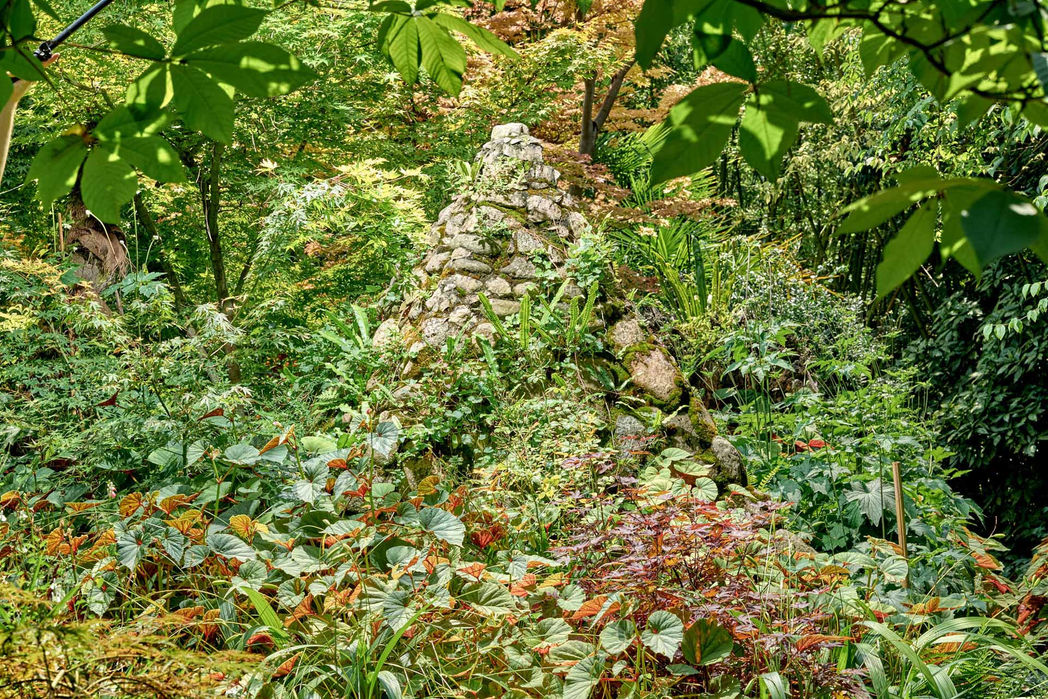Erwin Novak (Austrian d.2018) Piramide, 1995
It is on the outermost edge of the garden that we encounter Erwin Novak’s pyramid sculpture, a structure that has become intertwined with the surrounding greenery, nearly camouflaged by its natural environment. Its slight appearance stands in stark contrast to its monumental counterpart, the Great Pyramid of Giza, which remains an enduring symbol of human achievement. Erected over four thousand years ago, it was once the tallest man-made structure in the world, with a base spanning over 200 metres and standing at an impressive 146.6 metres. It was constructed with an estimated 2.3 million stone blocks of varying sizes and shapes, and it served as a burial ground for the ruling kings of the time. It is believed that they were designed as resurrection machines, with the pointed apex in the centre symbolising a conduit for the souls of the dead to ascend into the realm of the gods.
Simply by choosing the pyramid as the form for his sculpture, Novak invokes the profound themes of life, death and rebirth that are culturally intertwined with Pyramids. Whilst nothing is physically buried under Novak’s sculpture, we are compelled to consider our own mortality, its mere presence evoking age-old deep existential questions surrounding the human condition.
One artist that is immediately called to mind when looking at Novak’s sculpture is Britain's 1989 Turner Prize winner, Richard Long. Long shares Novak’s inclination to transform the ordinary into the extraordinary and works with natural, often found material. In 1983, he surmised this practice perfectly by saying,
“I am content with the vocabulary of universal and common means: walking, placing stones, sticks, water, circles, days, nights roads”.
Both artists create works that are in harmony with nature and deeply imbued with symbolic meaning. During his lifetime, Novak was known not only for his sculptural work but also as a founding member of the psychedelic garage rock band, “Novak’s Kapelle”. Novak was the drummer, and he dedicated his life to both music and making sculptures, seeking to elevate the everyday into something new and remarkable.
This ability to transform ordinary objects in either music or art into something extraordinary is key to Novak’s practice. The pyramid is a perfect example of Novak’s art, as it embodies so many universal themes that transcend both time and culture. Most importantly, it represents the human desire to leave a lasting legacy, be it in the form of a physical structure, a song, or a memory. It appeals to the most debated question: what happens after we leave this world?







